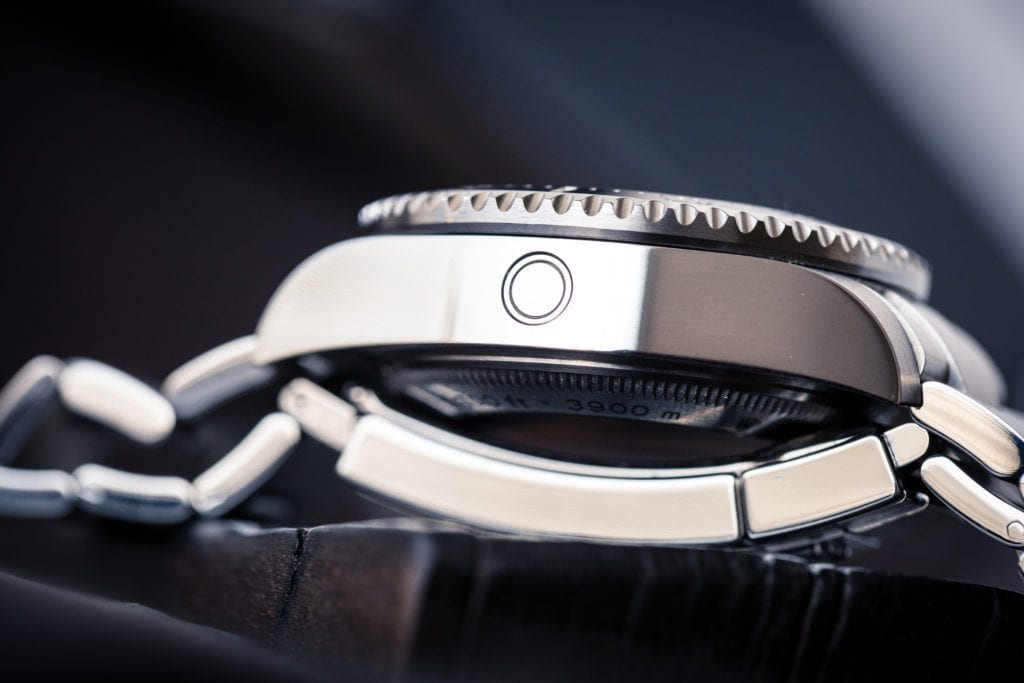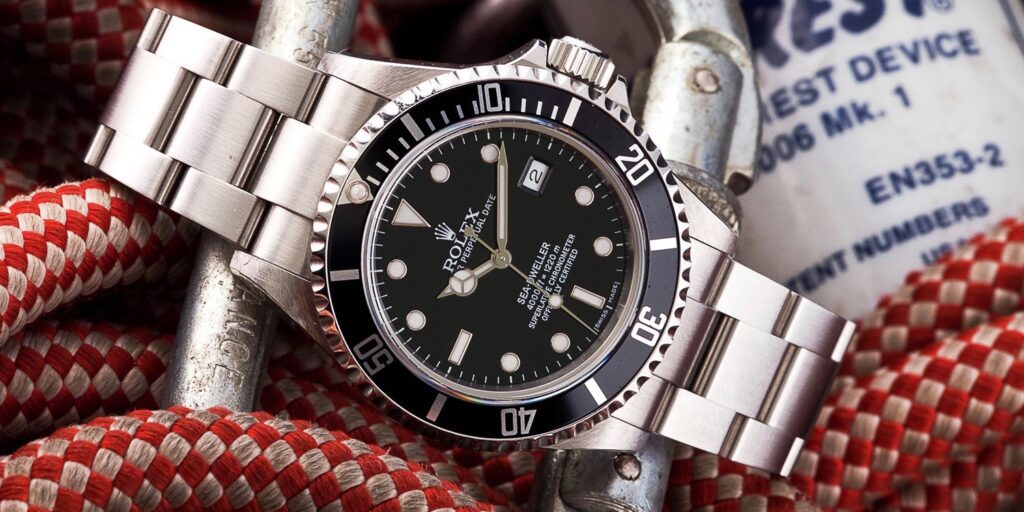What is a Helium Escape Valve?

Wristwatches can be placed under extreme duress when diving. Divers themselves can drop themselves down to depths that are unforgiving, which places substantive stress on their equipment when submerged for prolonged periods of time. Diving wasn’t always this rigorous, however. Watches were rarely (if ever) worn below 20 or 30 feet of depth—even up into the years of World War II. It was in the 1950s and 60s that SCUBA diving and deep-sea diving began pushing further and further into fathoms deep. Taking this into account, watchmakers started meeting the demand of deep sea divers for more sophisticated timekeepers. Keeping up with deeper and deeper dives, Swiss companies Rolex and Doxa S.A. collaborated to release watches that allowed an extra pressure release on wristwatches. Here enters our title question.
Now, there is a short answer to the above question. A helium escape valve is a tiny spring-loaded one-way valve built into a watch that releases pressure when the difference between interior and exterior pressures on a watch reach a critical point. Essentially, they’re an automatic release valve designed to adapt a watch to changing pressure. When helium, hydrogen, and other gases make their way into a wristwatch—due to stress on the case at deeper depths—it creates pressure that can pop a crystal clean off, or overly stress the watch’s moving parts.
Helium escape valves are thus a highly handy invention for divers. Helium atoms are the smallest natural gas particles that occur out in the world. They creep into the watch at deeper depths through the watch’s seals. When a watch ascends from a deeper depth, where the piece is more prone to accumulating pressure buildup, the ascension creates a pressure differential that can destroy even the best-made timeteller. Though many dive watches feature this release valve, later timepieces also incorporated a screw-down feature on their pieces. Manually unscrewing these caps or crowns effectively does the same thing as a helium escape valve—with a little more effort.

After Rolex released their Sea-Dweller (1967) and Doxa S.A. released their Conquistador (1969) other Swiss watchmakers followed suit. Today watches like Omega’s “Seamaster”, the Tudor “Pelagos” (a watch designed by Rolex), select watches from Citizen, TAG Heuer, Breitling, and others feature this dive-watch lifesaver. However, not every watch requires the release valve to stand up to the pressures of diving. Some watchmakers opt for thickened cases and crystal designs, with factory pressurization built into the piece. Constructing a watch like this is also often paired with a monocoque (no case-back) watch case. This makes accessing the insides more difficult for maintenance but makes the seal tighter for deeper dives. When it comes to everyday use, the helium escape valve may come across as a novelty. However, when it comes to performance watches it’s quite a mark of craftsmanship. It is a relatively new technology to water-use watches that ensures a piece will hold up at any depth. Keep your eyes out for these tiny valves on watches—they look kind of like a button on the case. They’re insurance for any type of water use, even if you’re no Jacques Cousteau.
Times Ticking has been in operation for more than 30 years, since 1982. We have performed watch repair for customers both locally and internationally. If it Ticks! We KNOW it! Our team of watch repair technicians have a combined experience in watchmaking of over 120 years.

